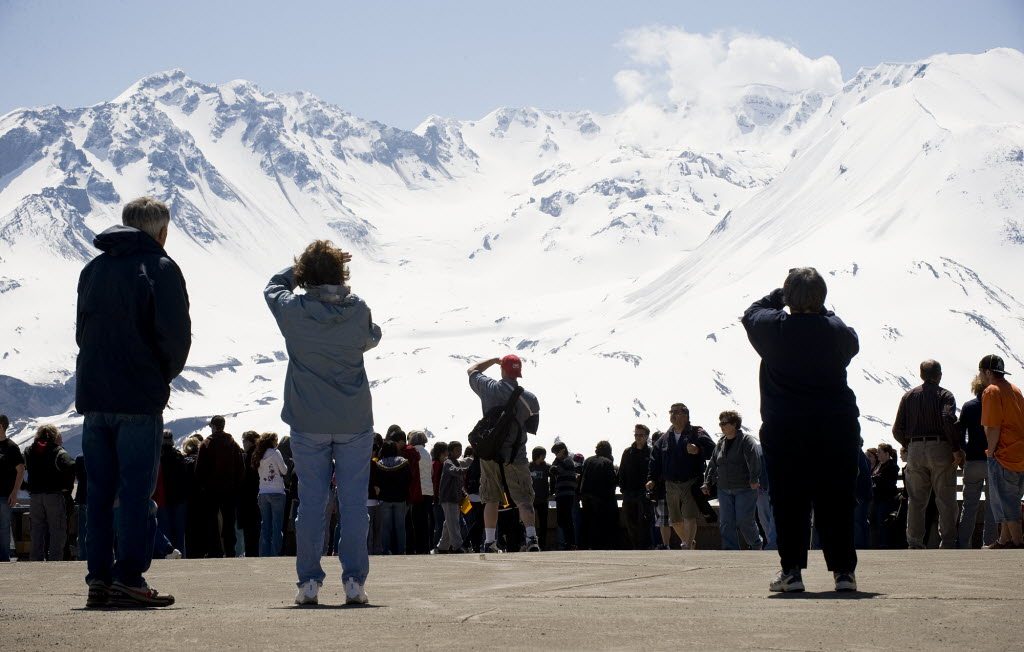For more information on life in Clark County, visit www.columbian.com/portrait.
For anyone interested in the forces that shaped the Northwest, Mount St. Helens remains a must-see.
But even if you’ve been to the national volcanic monument in Southwest Washington’s Gifford Pinchot National Forest recently, additions to the surrounding trails and facilities will offer a different experience in 2012.
Mount St. Helens
Johnston Ridge Observatory received one of the biggest face-lifts, getting new carpets, roofing and windows. New translation systems at the monument now cover several languages. And crews also finished construction on a new outdoor amphitheater at the observatory in 2011, with the space opening to visitors and presentations in 2012.
“Our objective is to connect people with what’s outside,” said Peter Frenzen, a monument scientist at Mount St. Helens. “The real show is outside the walls of the visitors center.”
Crews completed overdue maintenance on 105 miles of trails in 2011, according to the forest service. Forest service staff and volunteers also replaced 100 trail signs at 18 trails.
Mount St. Helens has been relatively quiet since 2008, when scientists declared that the eruption of a new lava dome inside the mountain’s massive crater had ceased. But the area continues to evolve in the wake of the catastrophic 1980 eruption that collapsed the mountain’s north face and flattened some 230 square miles of forest.
“It’s amazing that out of such destruction,” Frenzen said, “came such a productive and diverse — probably the most productive and diverse — ecosystem in the Northwest.”
The Johnston Ridge Observatory is at the end of state Highway 504, some 50 miles east of Interstate 5 interchange at Castle Rock. The mountain is also a popular climbing destination for visitors looking for a more up-close view.
On the Web: http://www.fs.usda.gov/mountsthelens and http://www.mountsthelens.com.
If mountains aren’t your thing, Southwest Washington offers plenty of other ways to experience the area’s natural wonder:
National wildlife refuges
Spanning 5,218 acres between the town of Ridgefield and the Columbia River, the Ridgefield National Wildlife Refuge owes its existence to the massive Alaska earthquake of 1964.
The 9.2-magnitude subduction-style quake disrupted large swaths of coastal nesting habitat for dusky Canada geese in Alaska, prompting federal biologists to look for wintering habitat elsewhere.
They found it on the collection of marshes, islands and pastures on the Washington side of the Columbia River, in the middle of an existing corridor for migratory birds. Today, the refuge accommodates Canada duskies, along with a wide variety of ducks, loons, grebes, pelicans, hawks, gulls, plovers, sandpipers, owls, chickadees, wrens, warblers and finches.
The U.S. Fish and Wildlife Service also maintains the Steigerwald Lake National Wildlife Refuge on the westernmost point of the Columbia River Gorge National Scenic Area. In 2009, Steigerwald opened a 2.2-mile loop trail with two boardwalks, two scenic overlooks and a 110-foot bridge across Gibbons Creek. The $2.2 million project includes parking for 20 cars, an information kiosk and vault toilets, along with the trail itself.
On the Web: http://www.fws.gov/ridgefieldrefuges/complex and http://www.fws.gov/ridgefieldrefuges/steigerwaldlake.
Columbia Springs Environmental Education Center
Just east of the Interstate 205 bridge on old Evergreen Highway (12208 S.E. Evergreen Highway), the old Vancouver Trout Hatchery continues to raise a relatively small number of fish while providing hands-on educational opportunities for local schools.
On the Web: http://www.columbiasprings.org.
Water Resources Education Center
The city of Vancouver is the proud owner of possibly the world’s grandest sewage treatment plant.
As part of a $47 million project to replace its Marine Park wastewater treatment plant at 4600 S.E. Columbia Way in 1995, the city added a two-story brick structure with exhibit hall, classroom, community room, water sciences laboratory and 1,000-gallon aquarium display. It’s surrounded by almost 50 acres of wetlands along the Columbia River waterfront trail across from the Portland airport. Admission is free.
On the Web: http://www.cityofvancouver.us/watercenter.asp.



